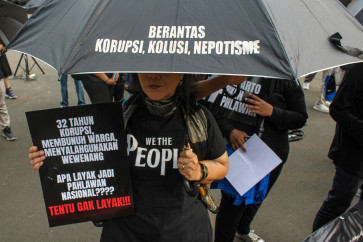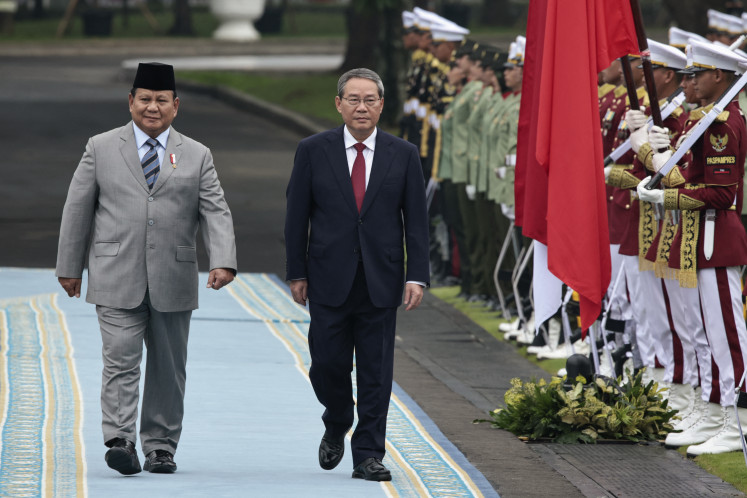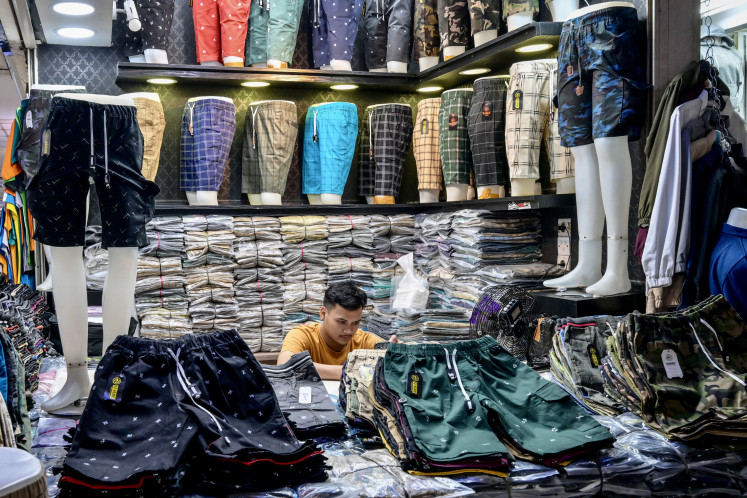Art Plus: National Gallery Singapore Presenting and Archiving (Indonesian) Art
A meeting point for major civilizations, religions and colonial powers; Southeast Asia has a practice of the fine arts that has personified a turbulent social and political history defined by a complex relationship between local traditions and Western influences
Change text size
Gift Premium Articles
to Anyone

A meeting point for major civilizations, religions and colonial powers; Southeast Asia has a practice of the fine arts that has personified a turbulent social and political history defined by a complex relationship between local traditions and Western influences.
Opened in November 2015, the National Gallery Singapore (NGS) currently oversees the world’s largest public collection of modern Southeast Asian art.
Boasting over 8,000 works, including paintings, sculptures, printmaking, photography and video from the 19th and 20th centuries, and housed in two immaculately restored and transformed national monuments–the former Singapore Supreme Court and City Hall; the NGS has been working with international museums to present Southeast Asian art in a global context.
The gallery’s inaugural exhibition of its permanent collection, “Between Declaration and Dreams: Art of Southeast Asia since the 19th Century” features nearly 400 artworks, including over 90 by Indonesians, in the UOB Southeast Asia Gallery.
On display are works that bring together the defining art movements and styles in the development of Indonesian modern art, from the 1839 composition Wounded Lion by Raden Saleh (1811-1880) to the so-called “pretty pictures” Mooi Indies landscape genre that prevailed until early in the 20th century.
Also featured are works by Sudjojono (1913-1986) and those artists who challenged the dominant paradigm with a new nationalist style under the aegis of PERSAGI (Persatuan Ahli Ahli Gambar Indonesia, 1938).
The exhibition continues with pieces from Affandi, Hendra Gunawan, Walter Spies and A.A. Gede Meregeg.
Avant-garde works from the 1970s are represented by the iconic Ken Dedes piece (1975, remade in 1996) by Jim Supangkat from the Gerakan Seni Rupa Baru (New Fine Arts Movement), as well as Krisna Murti’s 1993 video documentation 12 Hours in the Life of Agung Rai the Dancer.
Also noteworthy is the recently closed “Reframing Modernism” exhibition at the NGS’ Singtel Special Exhibition Gallery.
It was NGS’ first international collaboration, with the Center Pompidou of Paris, and depicted the history of modernism as a story of influence, as artistic movements developed in Europe and America and then spread to the rest of the world. The landmark exhibition focused on the practices of individual artists in the West and Southeast Asia and how they could be connected to one another.
Displayed side-by-side were over 200 iconic works by artists such as Kandinsky, Matisse, Picasso and Chagall, along with Indonesian masters Lempad, Sobrat, Sudjojono, Affandi and Hendra Gunawan.
Labeled as an ambitious exposition by foreign critics, it was a unique opportunity to engage with some of the masterworks of modern art, complimented by the presence of Indonesians, and to gain essential insights into modern art development.
Emphasis was given to the architect-cum-artist icon Lempad (1862-1975), whose line sketches revolutionized Balinese art, and the mysterious, pioneering woman modernist Emiria Sunassa (1894-1964). Dubbed an artist, nurse, princess, elephant hunter, plantation administrator, businesswoman and social activist, Sunassa began painting at the age of 40.
Both exhibitions presented some of the finest local art at a world class institution-a veritable boon for Indonesia.
However, it is the less publicized, archival projects occurring deep within the sanctums of NGS that will garner increasing international interest for Indonesian art–along with added value for collectors.
“People tend to see archives as merely a library, knowing it is important, yet often taking them for granted,” said Farah Wardani, who after spending 10 years as director of the Indonesian Visual Art Archive in Yogyakarta was recruited by NGS as the assistant director of its resource center to oversee building the archival inventory.
“I am excited to be a part of this enormous NGS project, the first highly focused, professional effort to archive Southeast Asian and Indonesian art history with international standards,” Farah says.
“Setting up the fundamentals of Indonesian art history involves the digitization of information, so we partnered up, mostly with artist’s families, then sorted through photo albums, diaries, catalogues and interviews, often finding the unimaginable,” Farah said, adding that she recently worked with the Sudjojono Center to archive almost 4,000 items by the artist.
“Archiving requires great time and energy, yet the resources can be used in many different ways. Archives are artifacts that bring value by activating life into the artwork adding to the sustainability of the ecosystem,” Farah said.
Archiving and database resources will bring Indonesian art history into the open, Farah said. “How many people actually study the masters of Indonesian art? It is still a niche art, a very unique subject, with a short and intense history. This is a wonderful opportunity for the international community to learn about more Indonesian art.”
Between Declarations and Dreams
Art of Southeast Asia since the 19th Century
Permanent Collection
National Gallery Singapore
1 St Andrew’s Rd, Singapore
Phone: +6562717000
10 a.m. – 7 p.m.
nationalgallery.sg









